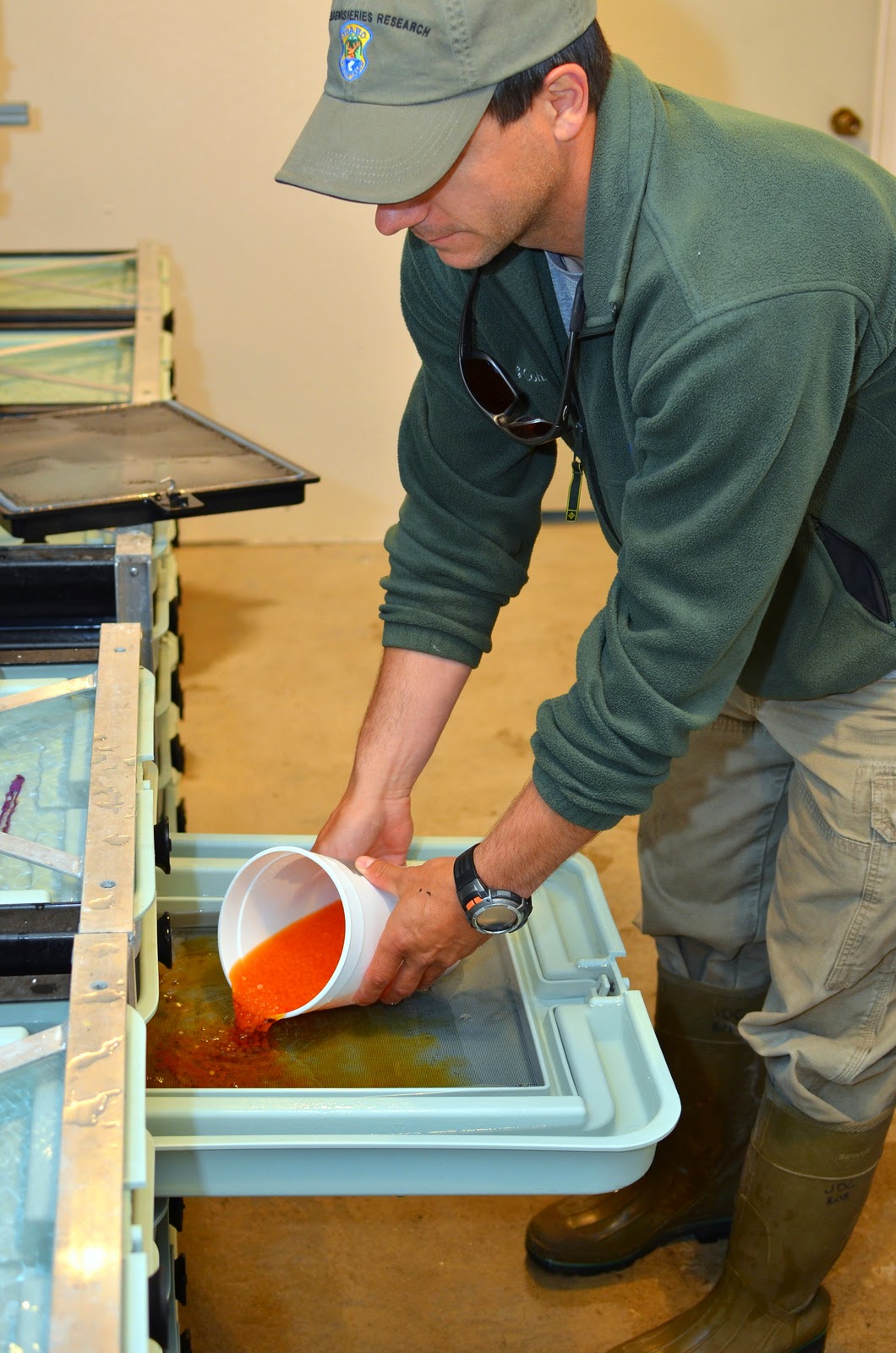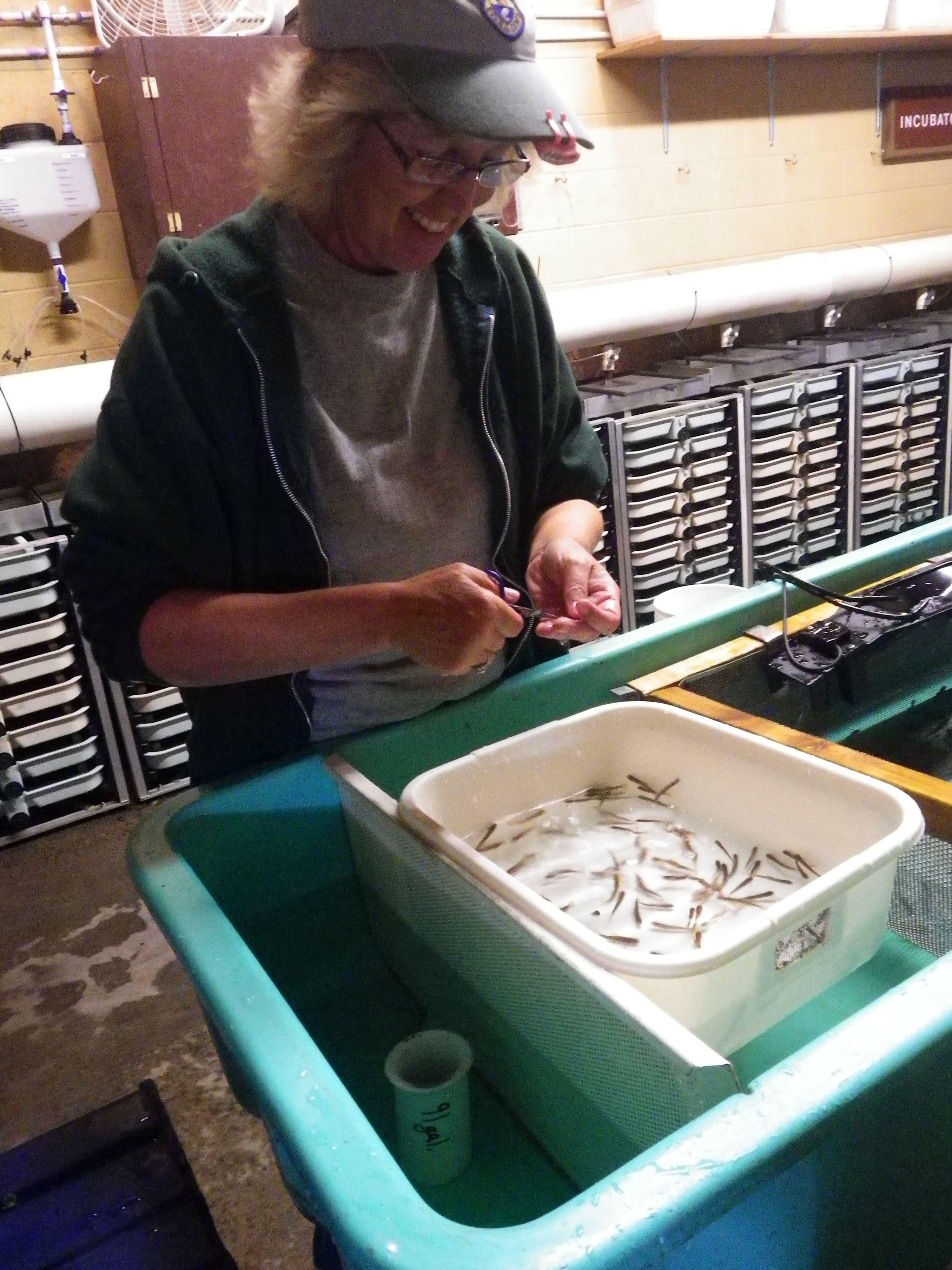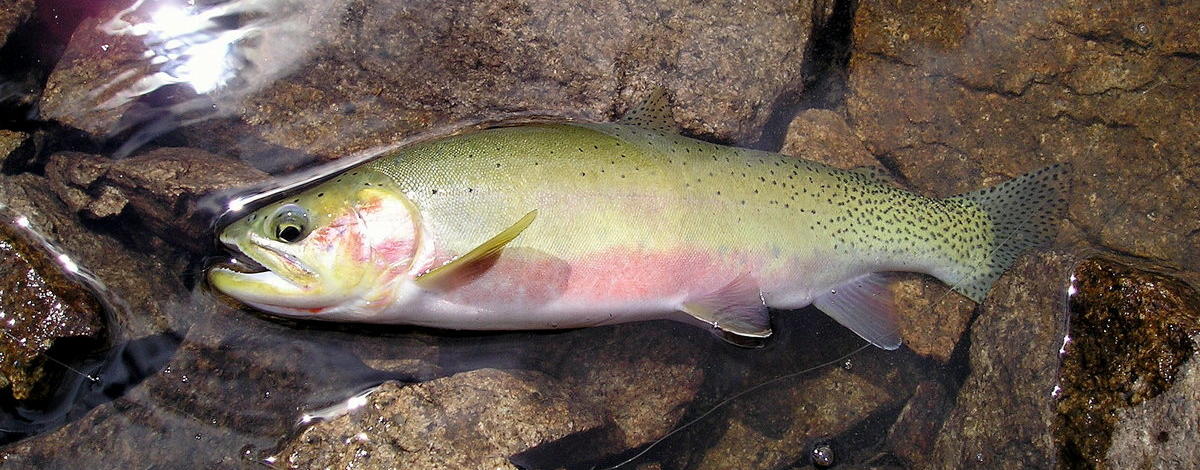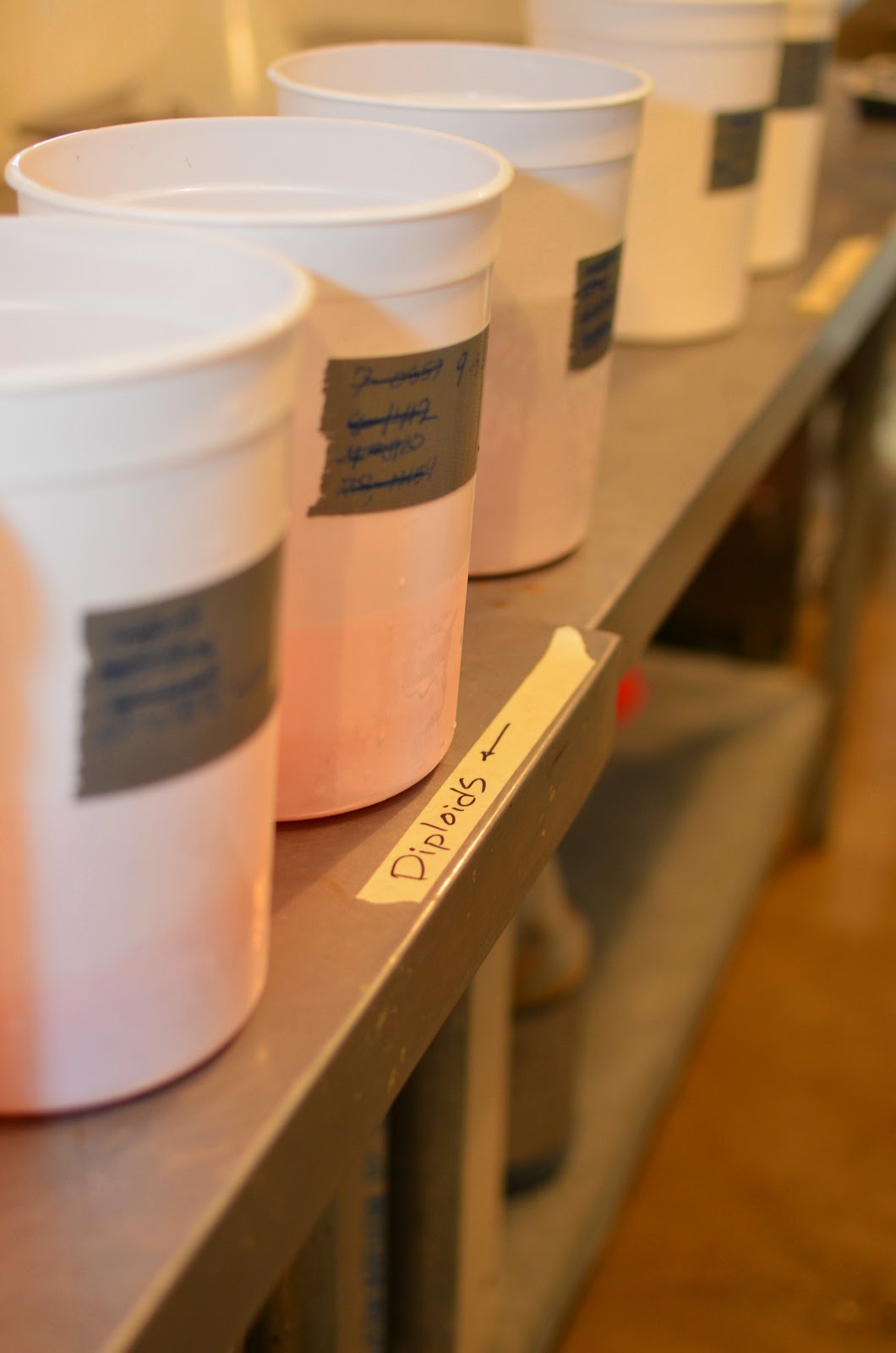Can triploid cutthroat trout improve fishing in backcountry lakes?
Part 1: Setting up for the long game

Biologists from the Idaho Department of Fish and Game have been researching how to improve stocking efforts in alpine lakes for decades. Recently, they have been looking into “triploid” trout and whether they might be useful for managing alpine lakes. Most trout are “diploid”, meaning they have only 2 sets of chromosomes (DNA). The most common trout stocked into Idaho alpine lakes is the Westslope Cutthroat Trout, but triploid cutthroat have not been stocked much. Triploid trout don’t reproduce on their own, so they can be a good option in watersheds where we don’t want hatchery cutthroat to interbreed with native trout species living downstream. Triploid trout also could potentially grow larger than their regular diploid counterparts. Biologists want to know if triploid cutthroat will produce the same kind of fishing experience of typical stocked cutthroats. That means making a trial run and looking at growth, survival, and catch rates across several lakes. It sounds simple, but this kind of head-to-head study in Idaho’s remote backcountry takes years to pull off.

Hatchery Manager John Rankin rinses a batch of newly fertilized Westslope Cutthroat Trout eggs. At 10 °C temperature, these eggs will need to be put into the pressure chamber exactly 35 minutes after fertilization.
Anglers who trek to Idaho’s alpine lakes find a unique and highly rewarding experience. These lakes offer solitude, dramatic scenery, and a wild feel rarely found in other fisheries. Plus, you might catch a species you may not see anywhere else. Thousands of years ago, receding glaciers carved out deep scars in the mountains. These holes in the landscape filled with snowmelt and rain, but were often inaccessible to the fish downstream. As a result, most of Idaho’s backcountry lakes were historically fishless. Trout were first stocked into backcountry lakes as early as the late 1800’s as settlers began to arrive in Idaho. However, stocking didn’t become widespread until the 1920’s. Over the decades IDFG stocking practices have been slowly refined as new information becomes available, but the tradition of providing great alpine lake fishing continues today.

Biologist John Cassinelli keeps a close eye on his watch, timing the pressure treatment exactly for each batch of eggs.
After planning which lakes to include in the triploid study, the next big step was to produce some triploid Westslope Cutthroat. Idaho’s Westslope Cutthroat brood stock lives way up north at the Cabinet Gorge Fish Hatchery. In late May, biologists worked with fish culture staff to make a batch of triploid cutthroat alongside the usual annual spawning for cutthroat stocking across the state. The cutthroat brood stock provide the eggs and milt needed to spawn each year’s batch of new cutthroat eggs destined for stocking across Idaho.

After pressure treatment, the eggs are disinfected, rinsed, and transferred to an incubation tray where they will sit for several weeks before hatching. In about 3 months, they will be almost 1.5 inches long and ready for stocking into alpine lakes.
For a very short time after fertilization, trout eggs have 3 sets of chromosomes (2 from female, 1 male) before the newly fertilized egg kicks out the extra set. Using a high water pressure chamber, biologists can interrupt that process. The result is an egg that keeps all 3 sets of chromosomes – making a triploid trout egg.
Batches of normal diploid eggs get ready for spawning at the same time. Cutthroat hatched from normal diploid eggs will be stocked at the same time into one set of several lakes. Sterile triploid cutthroat will be stocked into a second set of lakes to compare how they survive several years later.
Several months later in September, the eggs are now tiny cutthroat trout about 2” long. Since biologists won’t be able to tell these fish apart from other trout already living in the study lakes, they will need to be marked. An adipose fin clip provides a clear mark that can be easily identified years after the fin is removed.

Three months after hatching, the cutthroat will be about 1.5” inches long. They will get an adipose fin clip (like a hatchery steelhead) before they are stocked by airplane into some carefully selected backcountry alpine lakes.
Several years down the road, biologists will collect trout from each lake, looking for those with the adipose fin clip. They can then compare the size and numbers of these marked cutthroat trout in all the study lakes. This information will tell us whether the fishing quality at lakes stocked with triploid cutthroat trout is the same, better, or lower than lakes stocked with regular diploid trout. Stay tuned for Part 2 to find out the results of the study after we revisit each of these lakes years later to see what happened. We'll tell you the results and what they can tell us about managing fishing in alpine lakes.



